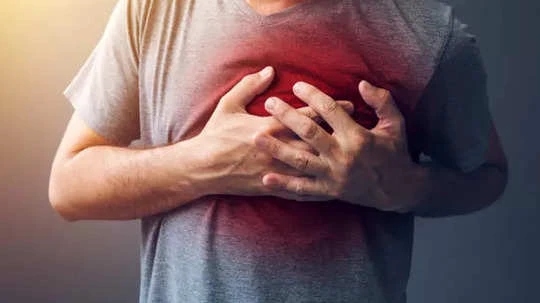Heart attack is among the leading causes of death across the world. According to statistics, more than half a billion people around the world continue to be affected by cardiovascular diseases, which accounted for 20.5 million deaths in 2022. Experts believe nearly 80 per cent of premature heart attacks and strokes can be prevented.
With advancements in science and medical technology, technology, there are tools to help diagnose, prevent, and treat heart diseases, but doctors say they are not reaching those who need it the most.
Even though heart diseases like heart attacks are the leading cause of death in men and women, they develop and present in dramatically different ways across the sexes.
Why are heart attack symptoms different in men and women?
According to studies, men suffer from heart attacks at nearly twice the rate as women. 1 Doctors say both men and women have differences in their anatomy and physiology – from the lungs and brain to muscles and joints.
Blood vessels
Both sexes also have differences in their cardiovascular systems. Compared to men, women have smaller hearts and narrower blood vessels.
Men typically develop the buildup of plaque, which causes cholesterol, in the largest arteries that supply blood to the heart. Women are more likely to develop the buildup in the heart’s smallest blood vessels, known as the microvasculature.
Chest pain
Also, when it comes to chest pain, there is a difference here as well. While men do report severe chest pain, in women, it is more like pressure, along with a few other symptoms like vomiting, sweating, and nausea.
Different risk factors
Doctors say women are more likely than men to suffer from diseases that mimic a heart attack, a few of them are:
- A coronary spasm: A blood vessel clamps down and mimics a heart attack.
- A coronary dissection: The wall of a blood vessel tears.
- Broken heart syndrome: This is a chemical heart attack where enzymes in the blood and changes in the heart muscles resemble a heart attack, but there are no blocked arteries like you see in coronary artery disease.
According to experts, in both men and women, the risk factors for heart attacks are completely different. Certain pregnancy conditions like pre-eclampsia and gestational diabetes are powerful predictors of future risk of heart disease.
According to a study, women aged 40 or younger with endometriosis were thrice more likely to develop heart attack, chest pain, or require treatment for blocked arteries, compared to women without endometriosis in the same age group. 2
Risk factors for men mostly include smoking, alcohol addiction, sedentary lifestyle, among others.
Symptoms of heart attack in men
- Chest pain or pressure that feels like heaviness, or pressure in the chest
- Discomfort or upper body pain in arms, left shoulder, back, neck, jaw, or stomach
- Irregular heartbeat
- Stomach discomfort
- Breathlessness and uneasiness
- Dizziness
- Breaking out in a cold sweat
Symptoms of heart attacks in women
While pain and squeezing sensations in the chest are common among men and women, doctors say many self-reported symptoms greatly differ in both.
Symptoms of heart attack in women include:
- Unusual fatigue lasting for several days
- Sleep disturbances
- Anxiety
- Lightheadedness
- Breathlessness
- Indigestion or gas-like pain
- Upper back, shoulder, or throat pain
- Jaw pain or pain that spreads up to your jaw
- Pressure or pain in the center of your chest, which may spread to your arm


